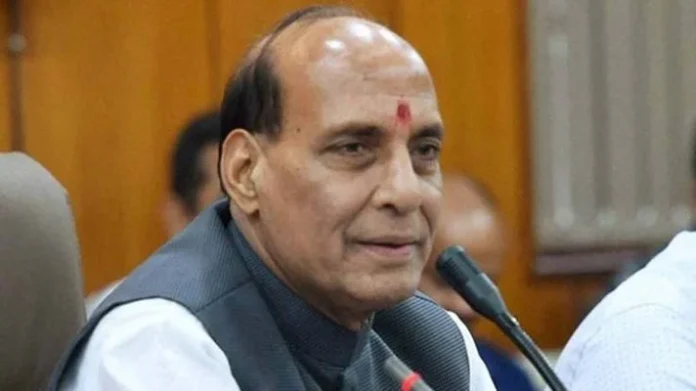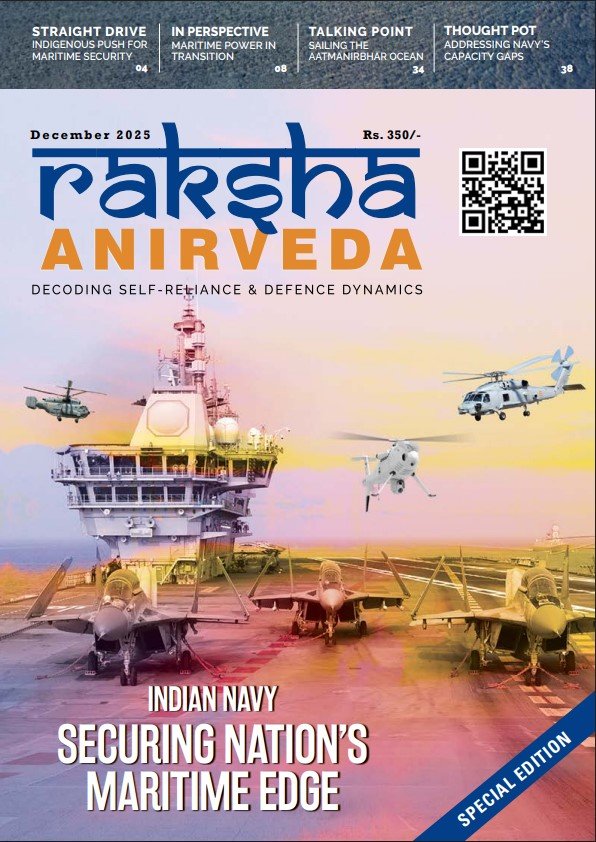On September 14, 2025, Defence Minister Rajnath Singh approved the Defence Procurement Manual 2025 (DPM 2025) to “expedite revenue procurement for the Services, enable domestic industry with simple processes, promote innovation & support enterprise,” to quote the PIB’s press release.
The press release goes on to say that DPM 2025 also eases the working capital issues faced by the defence industry by providing supportive financing options and relaxing unnecessary penalties, and contains several enabling provisions to boost R&D by the industry, academia and Defence Public Sector Undertakings.
These are exciting features, and one can only hope that there would be no hidden devils in the details, which are unknown, as the revised manual is not yet publicly available. But it also sets a benchmark for the high-powered committee, constituted by the Ministry of Defence (MoD), to revise the Defence Acquisition Procedure 2020 (DAP 2020), which governs capital acquisitions for the armed forces and the Coast Guard.
It is not possible to foretell what policy measures will be introduced through the revised DAP or what procedural changes will be made. Still, one of the known objectives of the exercise is to make necessary improvements to ensure that the operational requirements of the armed forces are met on time and their modernisation drive is not slowed down by the policy and procedural tangles.
A report by Rahul Singh in the Hindustan Times hinted that a high-powered committee was working on reducing the acquisition timeline to below two years, and that three delay-prone stages had been identified. These were the initial stage at which the Request for Proposal (RfP) is issued, the subsequent stage when the field evaluation trials are conducted, and the culminating stage of contract negotiations. These stages are indeed delay-prone, but the underlying cause for delay at these stages cannot be addressed only through procedural reforms.
The RfPs are issued as per the format prescribed in the contemporary procurement manual. A lot of effort goes into standardising the formats with a view to ensuring that every possible aspect of tendering is taken care of and no time is wasted in preparing an RfP afresh in each case. The prescribed formats can, of course, be further refined by the high-powered committee based on experience and current policies, but this will be of limited help if the prospective vendors find it difficult to meet the requirements specified in the RfPs.
In the absence of relevant data, it is difficult to say how far the situation has improved, but there was a time when several procurement cases used to get delayed, or even fall through, because of the problems related to the qualitative requirements (QRs) specified in the RfPs. In some cases, the QRs and even other requirements were not clearly defined or worded, resulting in vendors seeking clarifications at the pre-bid stage. Evasive responses to the vendors’ queries were not uncommon, as the vendor was often advised to refer to the very paragraph of the RfP which had given rise to the query. One wonders if things are much different now.
The delay is more pronounced in the case of procurement of equipment by the Indian Army, as it has to be trial-evaluated in different terrains and weather conditions. While this procedural delay is understandable, the basic problem stems from somewhat contradictory instructions on field trials
The underlying cause of delay at the field trial stage is somewhat similar, in the sense that the trials are conducted by an ad-hoc trial team in accordance with the trial methodology mentioned in the RfP. It is intended to give the vendors a clear picture of the extent of trial evaluation and the parameters with respect to which the vendor’s self-certification, certification by accredited labs, and trial by simulation would be acceptable. The Services Headquarters are required to, as far as possible, interact with the trial agencies and the vendors before finalising the trial methodology. That being the case, trials should go through smoothly, but they often don’t.
The delay is more pronounced in the case of procurement of equipment by the Indian Army, as it has to be trial-evaluated in different terrains and weather conditions. While this procedural delay is understandable, the basic problem stems from somewhat contradictory instructions on field trials. The trial methodology, according to DAP 2020, should be ‘comprehensive and unambiguous in its scope’ and ‘each parameter shall also be clearly detailed in the RFP’. But DAP 2020 also says that the field trials will not be conducted ‘as a process of elimination but to nurture competition’ and the ‘primary focus of the evaluation should, therefore, be towards testing the equipment based on its anticipated employability’.
These are confusing, if not contradictory, instructions. Any ad-hoc trial team, comprising personnel selected from among the functional units and formations, is likely to be confused when confronted with such contradictory instructions. No official conducting the trial can take the risk of declaring that, going by the consideration of anticipated employability, the equipment being trial-evaluated is fit for induction, although it fails to meet one or more of the parameters specified in the trial methodology. More to the point, this ambiguity provides scope for the aggrieved vendor(s) to question the conduct of the trials, causing inevitable delay in the conclusion of the trial evaluations.
Whether trials are required or not in a particular case, whether self- or lab-certifications could be accepted, whether trials could be conducted through other means like telemetry, etc., are decisions which require deep institutional and specialised knowledge not only at the actual trial stage, but also at the pre-RfP stage. DAP 2020 did envisage the setting up of Trial Wings at the training institutions/establishments of the respective arms/services under whose aegis trials could be conducted. Their expertise could also be utilised at the pre-RfP stage. As it turned out, the idea remained stillborn.
The third delay-prone stage identified by the MoD is virtually the end-of-the-process stage of contract negotiations. It is arguably the weakest link in the chain, as not enough attention has been paid to the discipline of costing and contract negotiation in defence procurements. The reasonableness of the quoted price is assessed with reference to the benchmark price, worked out by a costing committee (most of whose members are not cost accountants), before opening of the price bids. Not much is known about this process, but given the political atmosphere in the country, no official can take the risk of being liberal in working out the benchmark price. Consequently, the quoted price generally turns out to be much higher than the benchmark price, triggering a long process of negotiations by a committee whose members have had little, if any, training in contract negotiations involving state-of-the-art defence equipment.
The constraint of space does not permit an elaborate analysis of all the problems encountered at these stages in the procurement process, but one thing is very evident. The structure in place is not geared to handle complex procurements because of its disjointedness and the short tenures of the personnel who man this structure. This, in turn, prevents building up of institutional expertise and capacity to handle the complex task of defence acquisition, which begins with the identification of the operational requirement of the armed forces and involves actual acquisition and sustenance of the equipment, and its lifetime maintenance.
In the United Kingdom and France, these functions are handled, to varying extent and in various forms, by specialised agencies such as Defence Equipment and Support, and Direction Générale de l’Armement (or Directorate General of Armament) respectively. In the USA, multiple specialised agencies are working under the Office of the Under Secretary of Defence for Acquisition and Sustainment.
About a decade ago, a committee set up by the MoD recommended establishing a composite defence capability acquisition organisation, incorporating the features of similar agencies in other countries, best suited to local conditions, but nothing came out of it. It may not be within the high-powered committee’s purview to resurrect that recommendation, but it would go a long way in improving the system if the committee were to flag the underlying need for an overarching, specialised procurement agency as a sine qua non for long-term procurement reforms.
–The writer is a former Financial Advisor (Acquisition), Ministry of Defence. The views expressed are personal and do not necessarily reflect the views of Raksha Anirveda






